It has been awhile since I got any hate mail – even my blasphemous efforts of last week largely went unnoticed. So its time to tray a little harder – this time I am going to have a go at a true cult – those who worship at the alter of Warren Buffett.
This was largely prompted by the list of the worlds billionaires that I posted last week and the constant referring to Buffett as the worlds greatest investor/trader. As has been said many times extraordinary claims require extraordinary proof and whilst there is no Olympics for investors where a winner can be decided it is possible to generate some decent data and to begin to test certain claims.
I have been able to cobble together some data for various bits and pieces going back two decades and have generated a series of charts from that data. When you are constantly referred to as the worlds greatest investor you need to achieve certain benchmarks. First and foremost of these is to beat the underlying index. and Buffett does that – he has a positive alpha over the Dow – 16.3%pa versus 8.42%, which is impressive and certainly better than 99.9% of all managers out there. But, that alone may not qualify you as the best.
However, I wanted to look at this process of benchmarking in a slightly different context. Since my data begins in 1990 I wanted to see what Berkshire Hathaway (BRK.A) looked like in comparison to the Dow. However, comparing a stock to an index doesn’t tell me a lot other than how it performed in relationship to the index.
So I pulled out the Dow components for January 1990 and made the assumption that they has just been held individually from that time to the current day. This yielded the following data.
The first thing that stands out to me is what an absolute dog Kodak has been. Secondly, as a buy and hold proposition BRK.A only comes in at number 4. However, simply looking at percentage return doesnt tell me much since it is prone to being used for obscuring the truth. Percentage returns are a trick used by find managers to effectively lie about their true performance.
Consider this example. I have a fund that reports earning of +100% followed by -50%. If I look at the simple average return for this two year period I get 25%. So my expectation would be that if I invested $100,000 for this period I would have $125,000 in the account, but I dont. In the first year I doubled my money to $200,000 and in the second year I lost 50% of this so I am back to $100,000. I have not made anything. As such it is better to look at the value of $1.00 invested in a company/fund over time.
Once again BRK.A comes in at number four. However, simply buying the components of an index and holding them is a fairly inane way to invest despite its popularity among financial advisors. To make things a little bit more interesting I wanted to see what would happen if I had used a simple filter on a little bit bigger data set. So I ran a simple 52 week high scan over the S&P500 for the first week of January 1990. I assumed that each stock was simply held up until the present day. There is a slight caveat here and that is the issue of survivor bias which I am aware but dont think it changes things much. From the literature the drift caused by survivor bias is overstated but it has to be acknowledged.
Buying the stocks that were generated by the scan produced the following data.

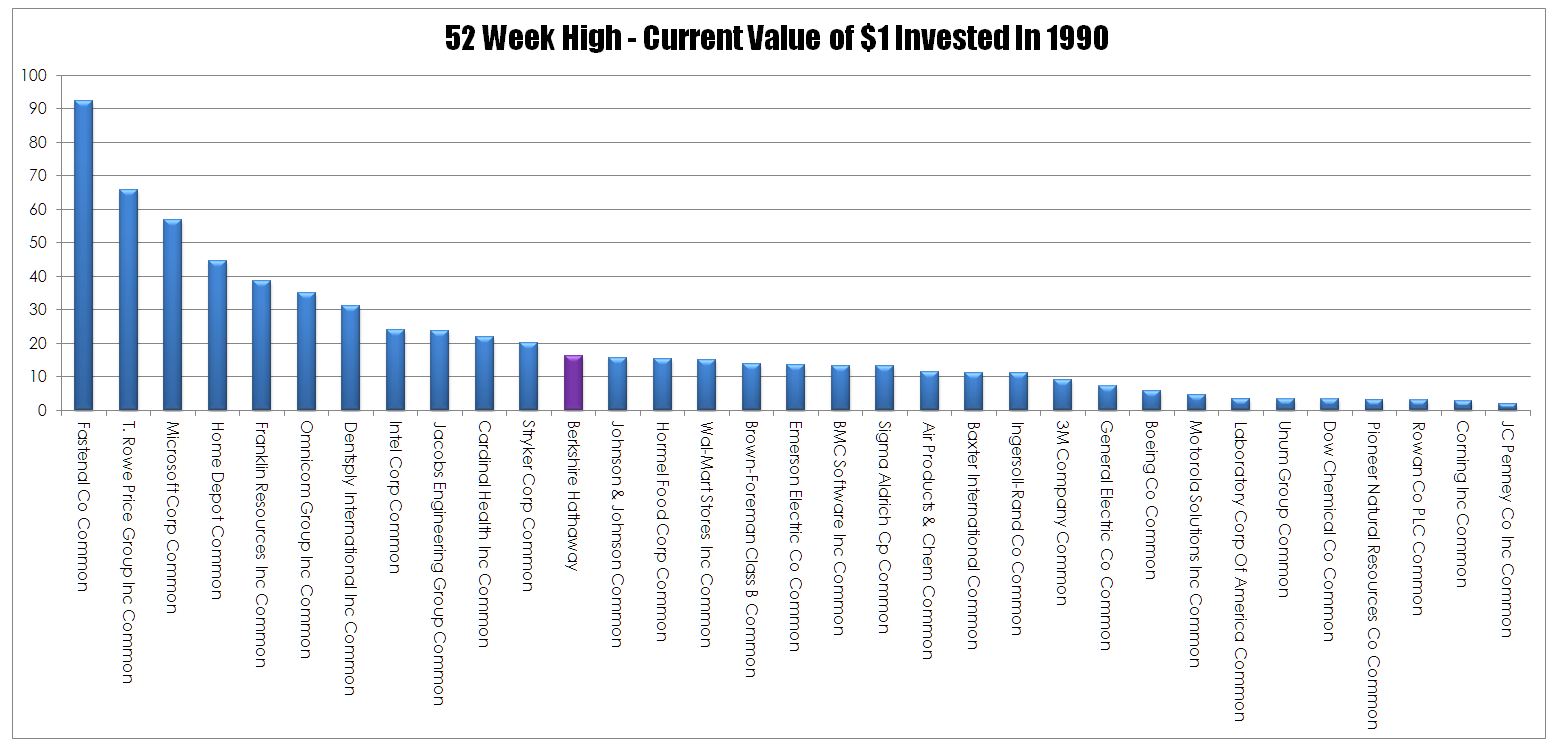 I have to confess the poor showing of BRK against a simple 52 week high surprised me. I would have thought that an actively managed company employing 260,000 people would have done better against a fairly simple scan with no additional filtering or money management.
I have to confess the poor showing of BRK against a simple 52 week high surprised me. I would have thought that an actively managed company employing 260,000 people would have done better against a fairly simple scan with no additional filtering or money management.
This lack of active or effective management reared its head when I looked at the MaxDD of BRK.

From what I could find BRK.A has a beta of 0.25 which means it should not have been hammered the way it was. Its MaxDD drawdown is not much different from that of the S&P500.
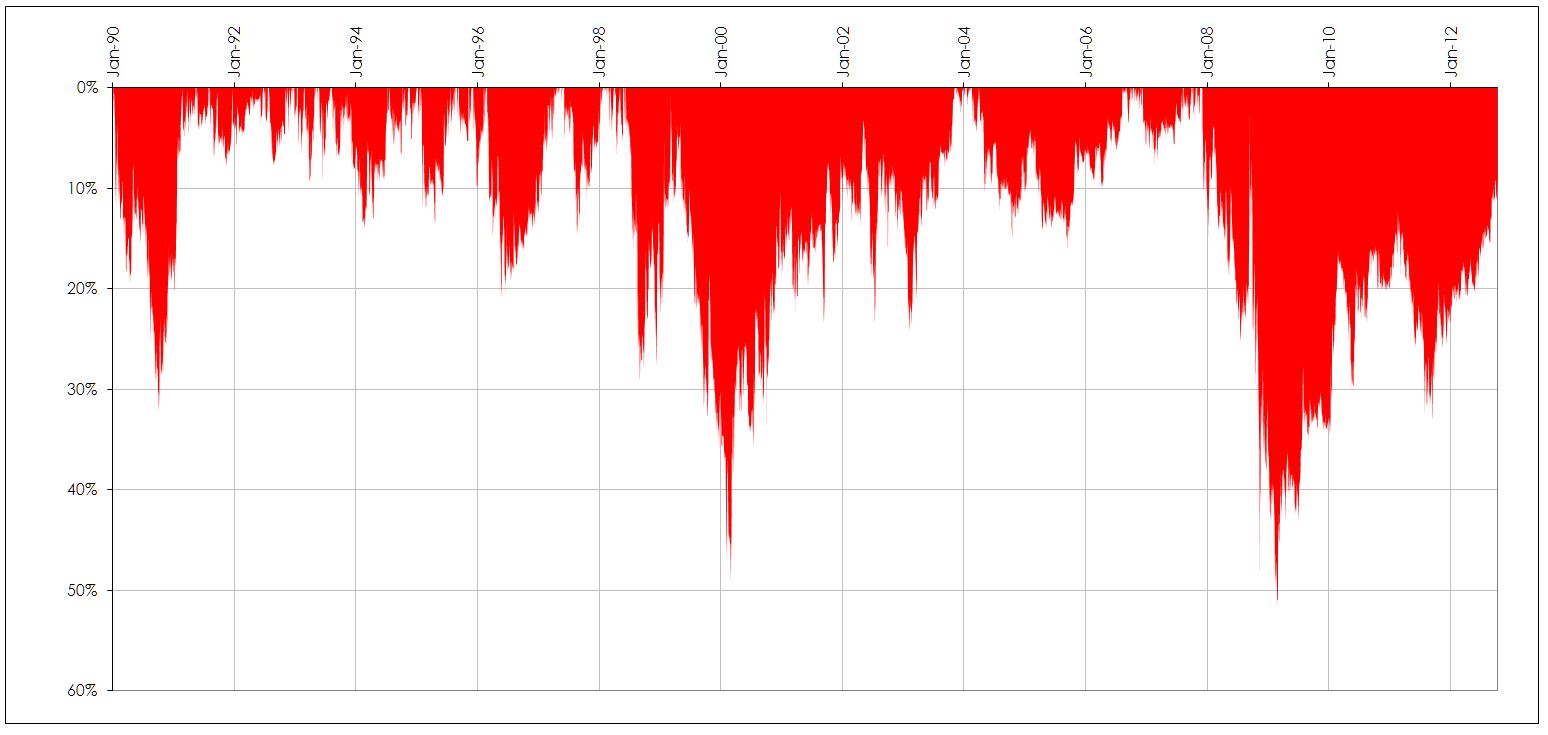 This lack of differential between the two does lead me to believe BRK.A probably would have gone under if it were not for the significant TARP assistance it received during the GFC.
This lack of differential between the two does lead me to believe BRK.A probably would have gone under if it were not for the significant TARP assistance it received during the GFC.
The data so far indicates that Buffett does perform well against the index when you simply use the index as a buy and hold surrogate. But this outperformance shrinks when a simple filter is applied to pick stocks. Buffett does have one thing on his side which cannot be underestimated and that is his longevity. However, to be called the worlds best and this is the point of the discussion you need to actually be the worlds best and that means beating everyone else.
When people talk about truly remarkable traders with a track record the conversation inevitably turns to Jim Simons and Renaissance Technology. In the data below I have compared the performance of the Medallion Fund to BRK on a year end basis.
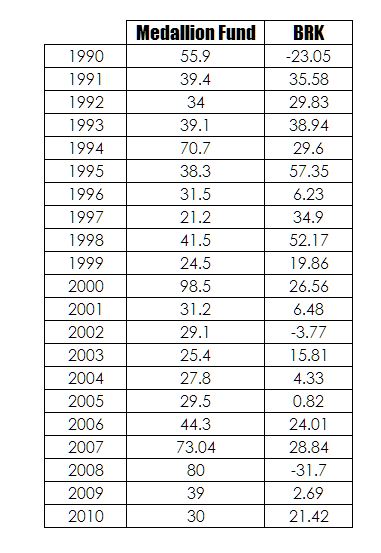
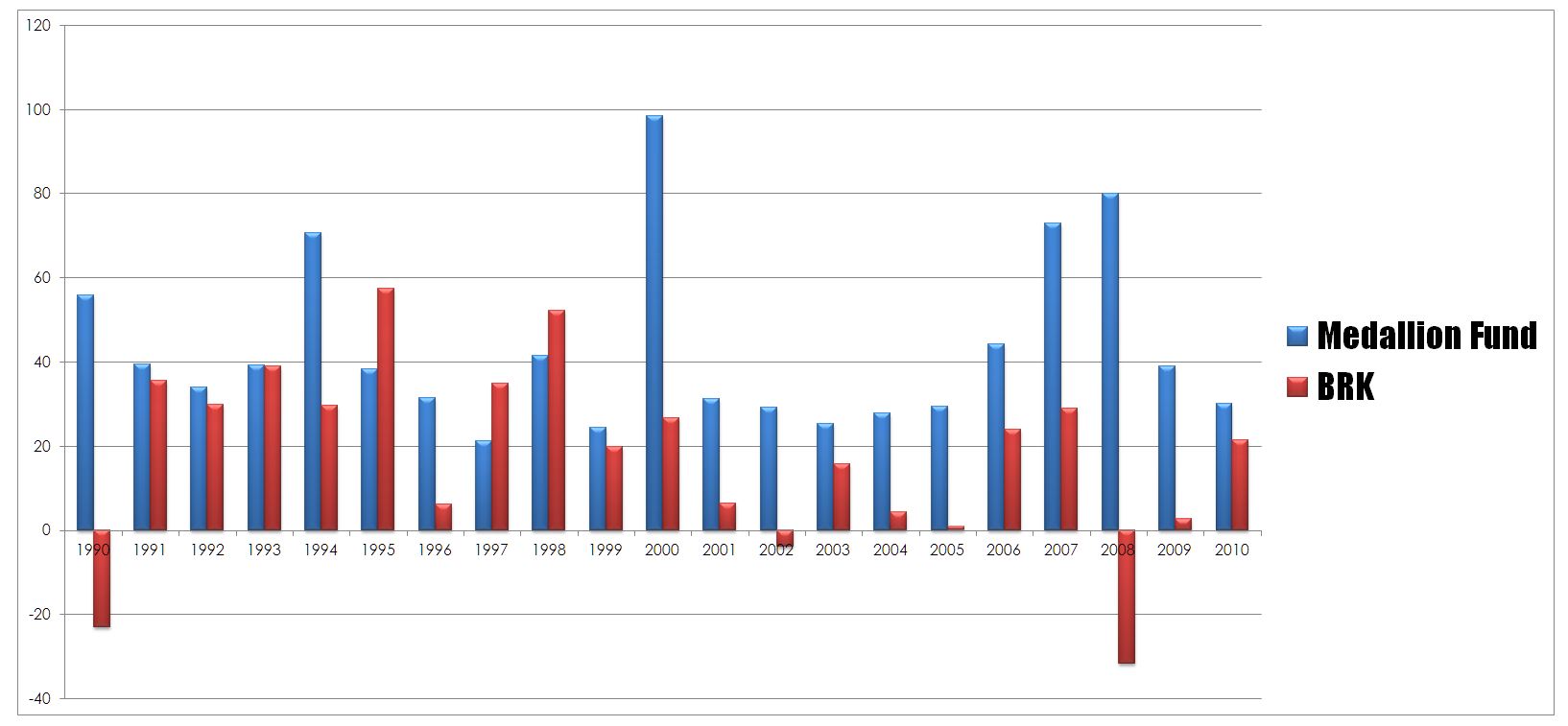 The average return for the Medallion fund for the period under investigation was 43% versus 17.9 for BRK. This is a striking level of out performance, this coupled with not a single down year makes Jim Simons my nomination for the words most successful investor/trader. Buffett may be the richest but he is not the best…….
The average return for the Medallion fund for the period under investigation was 43% versus 17.9 for BRK. This is a striking level of out performance, this coupled with not a single down year makes Jim Simons my nomination for the words most successful investor/trader. Buffett may be the richest but he is not the best…….
The question then becomes where does this leave the average investor when it comes to the notion of investing like Buffett. To answer this question you have to assume that he is an average investor and that the down home folksy spin you see is correct. In my view it isnt. It is impossible for Joe Blogs to invest like Buffett because Buffett isn’t an investor – he is a corporate raider, his ability to spot opportunities and to profit from them are completely different to the man in the street – as such books with the theme of Invest Like Buffett are simple nonsense. Unless of course the man in the street can take over a company, strip it of cash, get a seat on the board, be given preferential deals ala Goldman Sachs and receive billions in bail out money.

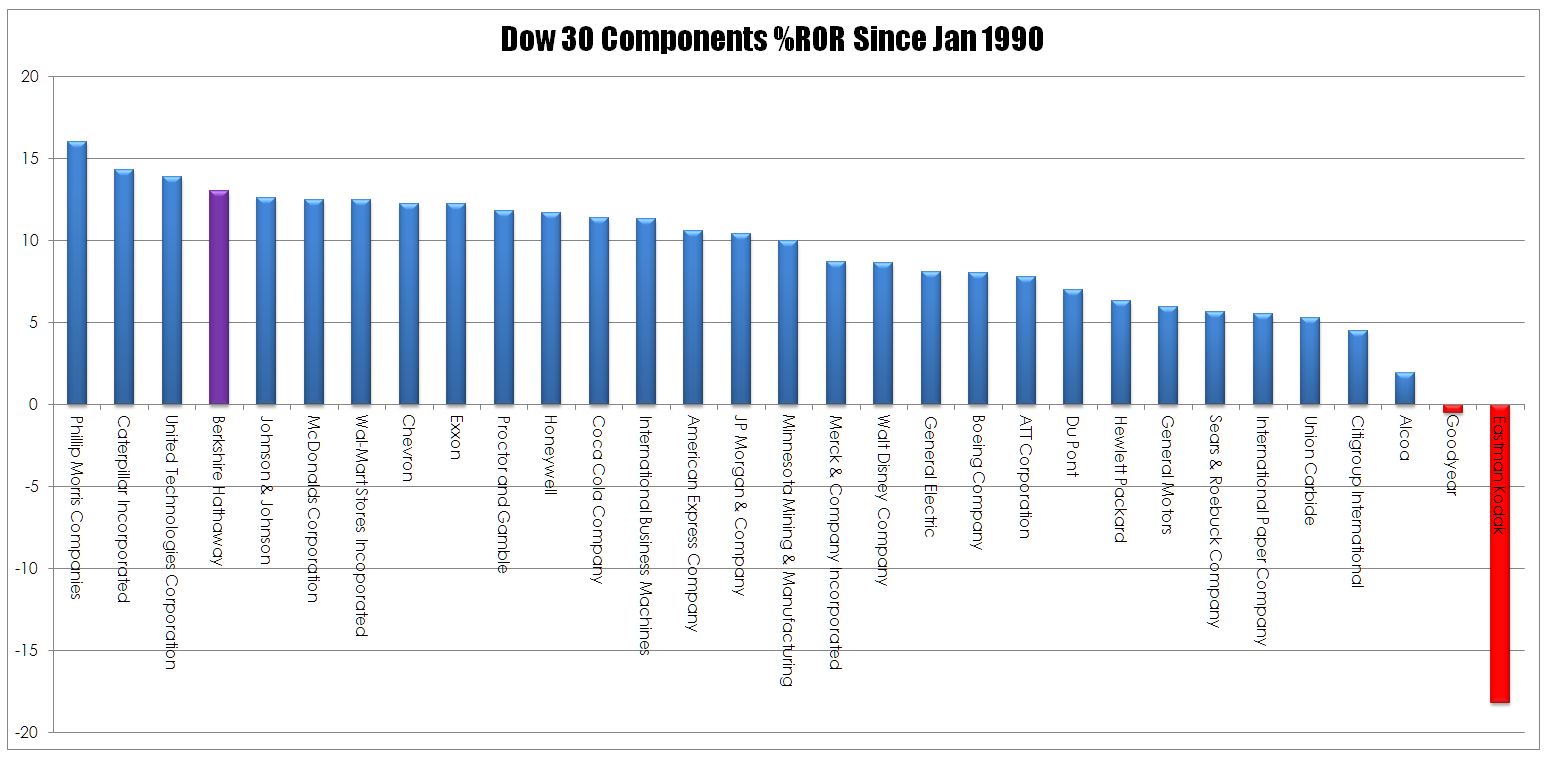
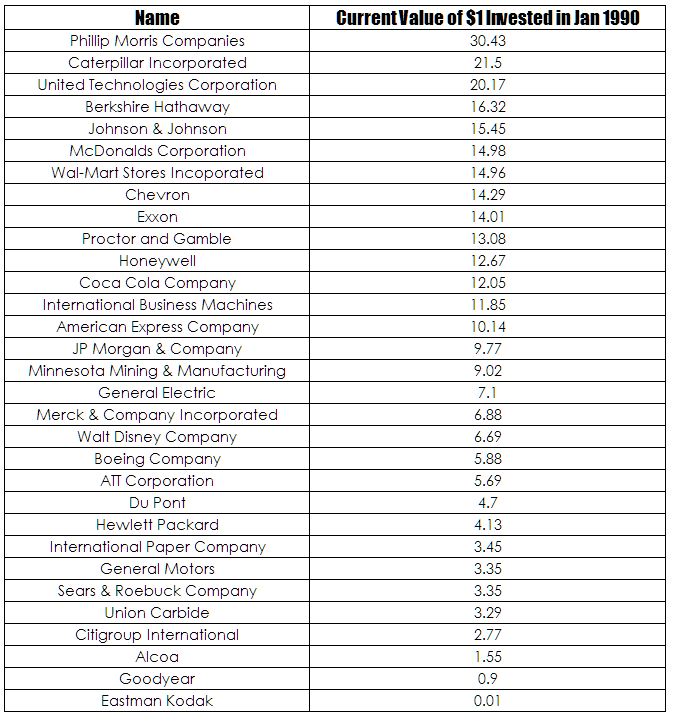





From my observations over the past ten years and my understanding of living in the trading zone this blog certainly puts buffet into perspective. I read a few months ago that his strategy was to buy and hold stock to obtain dividend only. This in not trading it is investing as he also stated the stock price fluctuations are of no consequence to him. The media are just as much to blame for the deception, it makes a good story all be it misleading and to satisfy an ego.